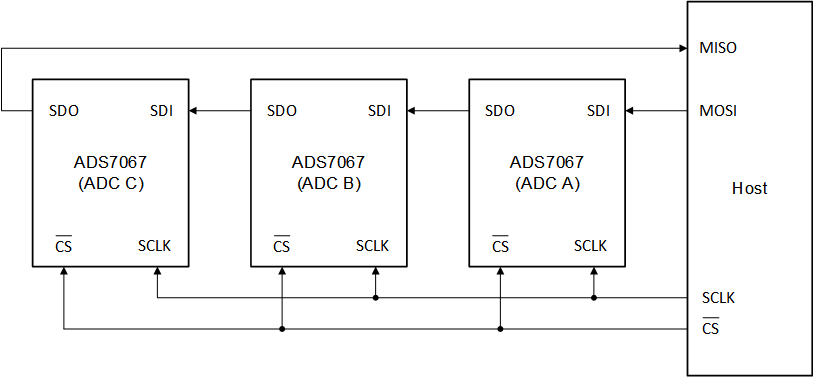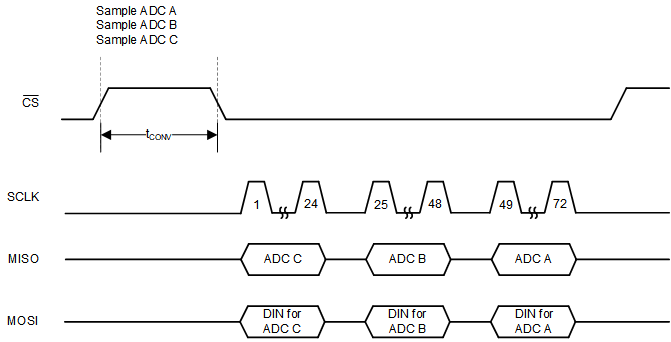JAJSJL9B March 2021 – September 2024 ADS7067
PRODUCTION DATA
- 1
- 1 特長
- 2 アプリケーション
- 3 概要
- 4 Pin Configuration and Functions
- 5 Specifications
-
6 Detailed Description
- 6.1 Overview
- 6.2 Functional Block Diagram
- 6.3 Feature Description
- 6.4 Device Functional Modes
- 6.5 ADS7067 Registers
- 7 Application and Implementation
- 8 Device and Documentation Support
- 9 Revision History
- 10Mechanical, Packaging, and Orderable Information
6.3.10.2 Daisy-Chain Mode
The ADS7067 can operate as a single converter or in a system with multiple converters. System designers can take advantage of the simple, high-speed, enhanced-SPI serial interface by cascading converters in a daisy-chain configuration when multiple converters are used. No register configuration is required to enable daisy-chain mode. Figure 6-7 shows a typical connection of three converters in daisy-chain mode.
 Figure 6-7 Multiple Converters Connected Using
Daisy-Chain Mode
Figure 6-7 Multiple Converters Connected Using
Daisy-Chain ModeWhen the ADS7067 is connected in daisy-chain mode, the serial input data passes through the ADS7067 with a 24-SCLK delay, as long as CS is active. Figure 6-8 shows a detailed timing diagram of this mode. In Figure 6-8, the conversion in each converter is performed simultaneously.
 Figure 6-8 Simplified Daisy-Chain Mode
Timing
Figure 6-8 Simplified Daisy-Chain Mode
TimingThe ADS7067 supports daisy-chain mode for output data payloads up to 24 bits long; see the Output Data Format section for more details. If either the status flags or channel ID are appended (APPEND_STATUS ≠ 00b) and the CRC module is enabled (CRC_EN = 1b), then the serial input data does not pass through the ADS7067 and daisy-chain mode is disabled.